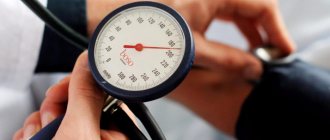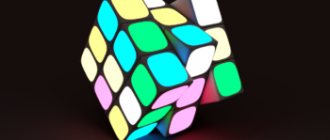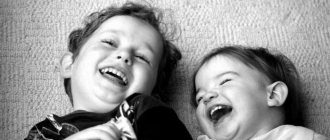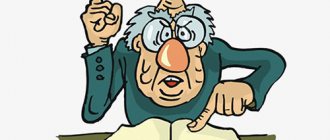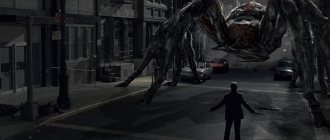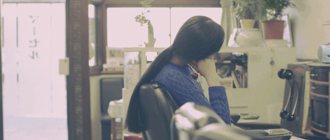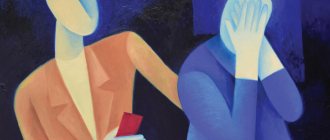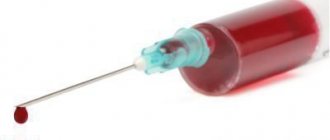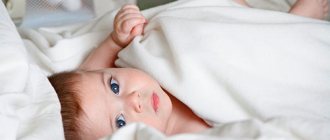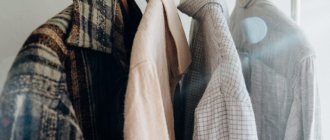Hello dear readers. Many of us have various kinds of fears, but there are those that at first glance seem unthinkable and far-fetched to us, but this is not so. A phobia is a mental disorder accompanied by unreasonable fear. It is common for a person to be afraid of something if a situation or circumstance threatens life or puts us in danger. However, a phobia is a fear that has no rational basis.
Scientists count more than 40 thousand phobias, and their number is only growing every year. Some are afraid of ghosts, some are afraid of heights, others are terrified at the sight of insects. But there are also the most unusual fears, for example, trypophobia.
What is trypophobia, how does it manifest itself, what symptoms indicate the presence of a mental disorder, and how to deal with this illness, you will learn in this article.
All photos that can cause an attack of trypophobia, so as not to harm you, I hid under spoilers! Open and look at these photos only if you are sure that they will not harm you!
What is trypophobia and who are trypophobes?
The term "trypophobia" comes from gr. τρύπα - hole and φόβος - fear. That is, in simple words, it is a fear of holes. Although this phobia is not classified as a type of mental disorder, about 16% of people on the planet suffer from the disease.
Trypophobes experience overwhelming horror and disgust at the sight of a cluster of small holes on something. To understand how developed this fear is in a person, you need to have a trypophobic experience. For example, true trypophobes, when they see cluster holes (a collection of holes and bumps on any surface), experience anxiety, disgust and irrepressible fear. Some develop a panic attack, and even a catatonic stupor.
Today, scientists are actively studying the topic of trypophobia, conducting numerous studies and tests that help people with a fear of holes overcome unpleasant sensations.
What is the most common cause of hole phobia?
Trypophobia in humans is caused by intolerance to any kind of holes and openings. Unfortunately, this disorder is much more serious than one might think. Trypophobes are afraid of anything that may contain many holes: coffee foam, pasta, honeycombs. A striking example of disgust for trypophobes is the seemingly harmless lotus fruit. The presence of round holes causes disgust and anxiety in people.
Even biological materials can cause fear and nausea in trypophobia sufferers. These include human skin (pores, for example), trees, insects and even stones, rocks with pronounced cluster holes.
The most severe case is the fear of holes in food. People suffering from trypophobia react especially negatively to waffle cakes, pancakes, cheese, cucumbers, strawberries, and even citrus fruits. Any hint of a cluster of holes will immediately turn you away from using the product.
Photo of a honeycomb.
Historical roots of trypophobia
In fact, every person, to one degree or another, experiences a dislike for a large accumulation of holes and holes. But healthy people who are not susceptible to trypophobia can easily switch their attention to other details. A trypophobe will not be able to stay in the place where his phobia was identified. He will want to leave the room or place as soon as possible.
Previously, scientists assumed that the fear of holes was inherent in humans by their ancestors. They explained the gene for fear of the accumulation of holes simply: the bodies of dangerous animals, for example, the octopus, posed a direct threat to our ancestors. Spiders and sea creatures had round holes on their bodies. Therefore, even an ordinary person may experience discomfort at the sight of some animals.
Scientists from the University of Essex have established a direct connection between pathogenetic fear. People have an instinctive tendency to reject certain visual images that could previously cause harm to health. We associate objects that cause fear in trypophobia with spots on the surface of the dermis, which are present in most poisonous animals and insects.
Therefore, we inherited from our ancestors a kind of instinctive mechanism: to feel disgust at the sight of such objects. However, such a genetic property can be aggravated by traumatic circumstances and cause a pathological fear of any kind of holes.
There is also another hypothesis for the appearance of trypophobia. It is connected with the work of our brain. According to this theory, we associate cluster holes with infectious diseases or the consequences of skin trauma.
For example, a wasp sting automatically causes an allergic reaction to the insect's venom in a person. The skin becomes blotchy and we can clearly see enlarged pores. Knowing that this is accompanied by pain and discomfort, we subconsciously avoid everything that could cause us harm. The same applies to the consequences of a disease such as measles. The skin becomes covered with pimples, and the holes are clearly visible. This, perhaps unconsciously, leads us to the conclusion that many holes are a possible health hazard.
Trypophobia in the modern world
To date, the medical association does not classify trypophobia as a type of disease. Cluster hole phobia is not a medical condition. However, this does not mean that phobias are not studied by researchers, scientists and psychologists.
Unfortunately, the phobia presented is also not given due attention. And all because there are not so many people with pronounced symptoms. Despite such circumstances, England is actively studying the issue of trypophobia and conducting tests at universities to study the human psyche.
Photo of cells.
Causes
The etiology of trypophobia has not been sufficiently studied, and what causes it is not known for certain.
The theoretical basis of this disease is considered to be a primitive fear, lurking in the subconscious, of the animal world, that is, its representatives who have aggressive defense mechanisms that look like holes (color and shape of the body, scales, suckers, etc.).
Predisposing factors for this phobic disorder are:
- genetic memory;
- the type of temperament of a person and his nervous system (increased excitability, suspiciousness, anxiety);
- severe shocks in childhood;
- social system and folk traditions;
- emotional trauma;
- deterioration in physical health;
- conflicts with others;
- accompanying phobias and fears;
- passion for the irrational (spiritism, fortune telling, mysticism);
- intense rhythm of life, lack of proper rest;
- prolonged insomnia;
- alcohol and/or drug abuse;
- psychological consequences from being bitten by poisonous animals or from encountering them.
Symptoms of trypophobia
As I wrote above, many people feel a slight dislike when they see holes. Even the accumulation of larvae, worms, or anthills can cause us anxiety and anxiety. We will want to leave the place where the hidden threat or unpleasant picture is located. But with trypophobes everything is much more complicated.
The first symptoms of trypophobia
Recognizing them is not so difficult. The main thing is to realize that such a problem really exists. The disorder can be identified by observing two elements, namely:
- Visual perception of clusters. Directly when you see an unpleasant image near you;
- Bodily sensations, i.e. the feelings you experience when visually examining an object.
The brain of trypophobes, when they see holes, immediately gives a signal to their internal systems about the onset of danger. Symptoms of this condition are accompanied by:
- Rapid breathing. Shallow and rapid breathing indicates that a person is wary of clusters;
- Tachycardia. A person may experience rapid increases in blood pressure and rapid heartbeat;
- Lack of oxygen. The trypophobe begins to breathe deeply in order to “breathe”;
- Often, such people begin to rapidly sweat and dry out their mouths. This is another important sign of trypophobia.;
- Nausea. A more serious symptom is the onset of nausea, which in some cases may be accompanied by vomiting. By the way, this reflex was conceived by nature for a reason. A person frees himself from everything unnecessary so that it is easier to escape from danger.
One has only to see something cellular and a person will immediately feel uneasy.
The most obvious symptoms of fear of holes
- Itching on the body. First, the patient begins to scratch his neck (the most vulnerable place), then his arms, and his torso. The itching does not stop for a long time, which in turn causes nervousness and irritability;
- Dizziness. Due to lack of oxygen, a trypophobe may experience clouding in the head. Black spots often appear in the eyes, which also cause hostility and fear in the patient. This may lead to fainting;
- Panic attack. In this case, the trypophobe may behave inappropriately, try to hide from the holes, hide in a corner and cry. A panic attack can manifest differently for each person. Some take a passive position and experience horror alone, while others show aggression and rage.
Most often, the consequences of trypophobia are accompanied by a rash on the skin and hands. After encountering cluster holes, the patient may notice red spots on the body on a bodily level. But over time, they go away without the use of any medications or ointments.
All symptoms can be combined, or just one may appear.
How did trypophobia appear in our time?
As mentioned above, trypophobia, or fear of holes, was recorded not so long ago.
Scientists give this a completely logical explanation.
With the development of technology (the Internet, digital cameras, smartphones, photo processing programs), many began to take and distribute fake photos that have nothing to do with reality.
Unpleasant, and sometimes actually terrifying, pictures of holes in people’s skin began to appear on the Internet. And if some immediately understood that the photos were not real, then others, more suspicious and less knowledgeable in photo technology, accepted and continue to accept this as the truth.
There is even a false belief among the population that trypophobia is a disease in the form of holes that corrode the body. Moreover, some began to “add fuel to the fire” and convince the unfortunate that this is a special virus, rapidly progressing and leading to serious consequences. Usually, after such phrases, people were offered a product (cream, ointment, spray) that could protect against trypophobia.
Important!
Under no circumstances should you ignore children's fears, even if they seem absurd to you. If you do not help your child get rid of fear, it may well develop into a phobia and significantly spoil the quality of life.
But trypophobia is exclusively a psychological disorder, not a disease. But what it can really lead to is a rash and itching due to nerves (neurodermatitis).
However, despite blatant photoshop on the Internet, the phobia is progressing. Some people, who were once very frightened by such pictures, are driven into trypophobic horror not by fake images of people’s skin with holes, but by cluster holes in nature, products and the world around them in general.
Types of fear of hole congestion
Today, there are two types of trypophobes. This aspect should be discussed in more detail to make it easier to diagnose the type of disease in the future.
Cutaneous trypophobia
This type of patient cannot tolerate bodily harm. Trypophobia on the body is probably one of the most unpleasant types of fear, as a person experiences panic, horror, nausea and disgust at the sight of:
- Acne or various types of pimples on the body;
- Sebaceous glands and wide open pores;
- Scars left after acne;
- Necrosis of the dermis.
It is not possible for a trypophobe to withstand all these physical circumstances. Considering that skin problems, to one degree or another, occur in all people, trypophobes have a hard time. Moreover, some patients even narrow their social circle and prefer homework to group work. With such asociality, the help of a specialist is necessary. I will describe below who you should contact.
Photo of a hand.
Cluster trypophobia
This type includes all other types of holes. These include:
- Food products (bread, buns, coffee, pasta, etc.);
- Sponge algae;
- Some types of flowers and seeds, as well as trees;
- Tunnels that were created naturally by insects or animals.
One way or another, with cluster trypophobia, a person can avoid meeting potential danger. That is, the patient may not buy scary products, not look at them in the store (although sometimes this can be difficult), and avoid wild nature.
Photo of a porous chocolate bar.
Trypophobia on the skin: photo
Trypophobia, which occurs when seeing skin lesions, is associated with the fear of dangerous skin diseases. Scars, wounds, and sores on the body give rise to a feeling of disgust in impressionable people.
Trypophobia on the skin
Even decorative, artificially applied “wounds” to the skin can cause panic in a trypophobe.
Decorative holes on the skin causing trypophobia
Causes of phobia of holes and holes
The main researchers of the strange mental reaction to multiple holes, Arnold Wilkins and Jeff Cole, noted that the term “phobia” does not accurately explain the patient’s condition. The opinion of psychologists has come down to the fact that they do not see fear in this disease, but rather disgust and disgust.
If you type “What is trypophobia” or “Trypophobia test” on the Internet, you will be asked to watch a thematic video series on cluster holes. Any footage that graphically depicts hands in honeycombs or wide holes on the hands, face, and body in general will cause disgust and hostility even in a mentally healthy person.
Postmodern artists painted hands and bodies riddled with holes and worms, which looks more like a sick fantasy of the author than an aesthetic artistic masterpiece. And here the question arises by itself: what comes first – multiple holes that cause fear or such images created by someone’s fevered imagination?
It is worth noting that researchers at the University of Essex also identified signs of trypophobia. Thus, from the proposed pictures, where both cluster holes and other images were presented, they noted that the first made them feel disgusted, but the second did not.
British scientists interpret trypophobia as an “evolutionary gene” that we inherited to help us survive the sight of poisonous animals and insects.
Photo of a honeycomb.
Is it possible to heal yourself?
Unfortunately, only a few can cope with the disease on their own, because the disease occurs at the level of the subconscious, which many people are unable to control. As the main measures to help overcome trypophobia at home, it is worth noting first of all:
- meditation;
- relaxation;
- situational training.
It is important to prepare for attacks because they usually occur at the most inopportune times. Trypophobia often causes itching or redness on the human body, so it is necessary to carry antiallergic medications with you to reduce discomfort. In addition, you should always have clean water, ammonia or other means on hand that will help you quickly come to your senses in case of fainting.
Stages of trypophobia
Of course, this is a mental problem. Accordingly, help needs to be provided to overcome this unmotivated fear. Today there are three types of trypophobia:
- Light form. When a person sees an object of fear, he begins to get nervous and experience anxiety, for example, looking at chocolate or coffee foam;
- Medium shape. In this case, the patient experiences persistent disgust, nausea, and sometimes itching may begin;
- Severe form. A person experiences unbridled fear, leading to a panic attack. Semi-fainting and fainting conditions may also occur.
In any case, with mild or severe trypophobia, you need to take measures to alleviate your condition.
Don't be afraid to see a doctor!
Types of disease
Since the described illness was introduced into medical practice relatively recently, trypophobia, the varieties of which do not have a generally accepted classification, is still being studied. As a rule, doctors distinguish such types of disease as:
- mild form (when the individual experiences nervousness, anxiety);
- medium form (characteristic symptoms are nausea, itching, trembling);
- severe form (the patient complains of panic attacks, dizziness, vomiting).
Phobia of cluster holes in the body or surrounding objects is considered a serious obstacle to normal human life. It often causes misunderstandings, ridicule, and outright hostility on the part of work colleagues, friends, or strangers. No matter how incomprehensible this disease may seem, people with this disease should be treated with respect
How to Diagnose Cluster Hole Fear
Considering that today it is impossible to diagnose “trypophobia” due to its not being included in the medical classification of diseases, the disease is classified as obsessive-compulsive disorder. Accordingly, diagnosis and treatment are the same as recovery methods for other types of phobias.
Today, the diagnosis of the condition is carried out by a psychotherapist or psychologist. The only difference is that the first has the right to prescribe drug therapy in the form of sedatives and stronger drugs, while the second does not have such powers.
It depends only on your symptoms which specialist is preferable to go to. However, it should be noted that even with a severe stage of the phobia, taking pills does not guarantee complete relief from the disease. In this case, it is better to find a good specialist who can correctly diagnose your condition and prescribe competent therapy.
Photo of a cellular plant.
Medication methods for treating atrophic scars
A chipped scar has the shape of a shallow pit with converging edges and is especially dangerous. Injections with the patient's adipose tissue or collagen are recognized as effective methods. But the advanced form (fibrotic scar) negates all attempts to get rid of the defect.
Rectangular scars are a common form, as they form at the site of a pimple. Keep in mind: unsuccessful and incorrect squeezing of a pimple is a direct path to a rectangular scar. Chemical reconstruction methods will be effective in this case. Salons offer a restoration service based on triacetic acid.
Rounded scars blend into healthy skin and may have pronounced depressions and medium-depth scars. In the first case, a small incision is made and the affected tissue is replaced with healthy tissue or hyaluronic acid. In the second case, only surgery or laser treatment will help.
And the last type is hypertrophic scars. Very noticeable and unaesthetic. They are formed as a result of an abnormal hyperactive increase in the number of connective tissue cells.
Treatment with injections of deep atrophic scars left after a girl carelessly squeezed out the rash is widely used in dermatology and cosmetology. Preparations based on:
- stabilized hyaluronic acid;
- the patient's own subcutaneous fat;
- stimulator of collagen production.
Should fear of holes be treated?
A person must answer this question for himself. It is advisable to treat a phobia if it interferes with life, causes discomfort and life seems hopeless. I have already written above about the stages of trypophobia. But as practice shows, even with a mild form of phobia, not only the mood, but also life in general deteriorates.
If you feel that you cannot ignore the smallest details that you associate with clusters, it is better to consult a psychologist. This is a sure sign that you yourself cannot cope with obsessive fear.
How to steam your face correctly
1. Boil a liter or a half of water in a small saucepan, drop in a little essential oil suitable for your skin type.
2. Place your face under the steam at a distance of 20 cm from the edge of the pan (careful: don’t get burned!), cover yourself with a towel and close your eyes.
3. After 10 minutes, you can begin performing cosmetic procedures.
For recipes and rules for using baths, read the article “Steam baths for the face.”
Treatment of trypophobia
Any psychological and mental illness does not have a single therapeutic program. Each patient is individual, and the approach to solving the problem is selected taking into account the person’s medical history. There are currently three types of treatment for trypophobia. Let's look at them in more detail.
Pharmacological.
Accompanied by taking sedatives, antihistamines or stronger drugs. Drug therapy is justified only if the patient experiences bodily sensations (itching, dizziness, loss of consciousness). This therapy is aimed at quickly relieving the symptoms of trypophobia, but is not curative.
To reduce the severity of cephalgia of psychogenic etymology and attacks of headaches, short-term courses of anxiolytic drugs, such as benzodiazepine tranquilizers, are used.
For mild symptoms of trypophobia, it is important to prescribe sedatives to improve the patient’s sleep. If the phobia is accompanied by seizures or convulsions, the doctor has the right to prescribe anticonvulsants.
The pills are aimed at relieving symptoms, not treating.
Psychotherapeutic
The work of a psychologist is to normalize the patient’s mental state by conducting a psychotherapeutic course. In this case, there is no clear method of the session, since the psychologist creates the course, taking into account the patient’s condition.
One proven practice is to reduce the symptoms of a panic attack. The patient is offered a series of pictures that evoke peace and aesthetic feelings. Along with inspiring images, the psychologist also shows the object of the patient's fear, and then again calming fragments. Gradually, the specialist increases the duration of display of cluster images, replacing them with pleasant pictures. The presented technique includes proper breathing.
When seeing both images, another trigger begins to go off in the patient’s head: “it’s not as scary as it seems.” The results of such sessions are truly fascinating. Most trypophobes experience a decrease in the intensity of their anxiety reactions, and also gain control over their own behavior.
Perhaps the best way to overcome trypophobia.
Hypnosis treatment
Sometimes a destructive thinking program is so deeply embedded in the psyche that it is not possible to identify it in a waking state. Hypnosis techniques are used to treat panic attacks and aggressive conditions. What is its essence?
Sometimes a person himself cannot truly understand the reason for his fear. Unreasonable worries can be identified in the subconscious, which is impossible to reach in wakefulness. The specialist reduces the control of a person’s consciousness, plunging him into a hypnotic trance, after which he corrects the “plan” of the subconscious.
During a natural half-asleep state, a hypnologist can reveal the true mechanisms of progression of trypophobia. In this state, the hypnologist instills a motivating attitude to eliminate defective thinking structures and introduces a new, constructive model of behavior.
Hypnosis can sometimes help.
Symptoms of the disease
Trypophobia, the symptoms of which are not fully understood, is one of the youngest phobias, and many authoritative experts still refuse to include it in the list of diseases. An individual susceptible to the disease in question most often experiences the following conditions:
- outbursts of fear or panic attacks;
- prolonged feeling of anxiety;
- cardiopalmus;
- severe dizziness;
- increased sweating;
- nervousness.
Trypophobia in people can be accompanied by more serious health consequences. If in the early stages of the disease the patient experiences severe anxiety with all the attendant physiological symptoms, then as the disease progresses, itching, redness of the skin, muscle spasms or convulsions are added. In its extreme form, the disease leads to loss of consciousness, difficulty breathing, loss of coordination and psychological abnormalities (depression, withdrawal, reluctance to go outside). The signs of trypophobia can vary significantly, so only an experienced specialist can make an accurate diagnosis.
World research on trypophobia
To this day, scientists and psychologists debate how serious trypophobia is. Some believe that this is an obsession, others that it is a mental disorder. But in order not to scare all people, signs of trypophobia in a person are a normal phenomenon.
If you, for example, look at skin eaten away by worms, this will automatically cause rejection and hostility in you. So there is no need to be ashamed of this circumstance. What looks unpresentable, ugly or disgusting causes an understandable reaction in our brain.
Trypophobes, on the other hand, experience an irrational fear of any kind of holes. This is the main feature of the disease. Worldwide research on trypophobia is currently being actively conducted by scientists and psychologists. Despite the fact that there is a category that suffers from this phobia, it is impossible to find a single treatment method.
The human psyche is individual. Some course will be useful for one patient, but not for another. Therefore, a competent psychologist works with the patient individually.
Photo of coral.
The most terrible disease in the world is called trypophobia: don’t even doubt it
Visit a contemporary art exhibition.
Take a close look at the installations and paintings. Check your reactions. If the exhibits offered to your attention cause indignation and disgust, if goosebumps run through your body and vomiting begins, congratulations: the immune defense of your psyche is working normally. Using the same principle, you can test yourself by looking at pictures of worm-eaten skin from the ubiquitous “British scientists.” Don't let yourself be manipulated: disgust is a natural reaction to such images. This is a sign of mental health, not a disease with an obscure Greek name.
Well, if you are still afraid of holes in boiled pasta, the treatment is very simple: immediately replace it with fried potatoes.
Chupalova Maya · Apr 11, 2018
Trypophilia is the opposite of trypophobia
Indeed, today there is an unofficial name for another deviation opposite to trypophobia - trypophilia. In this case, a person, on the contrary, experiences a craving for all sorts of clusters of holes, both on the body and on other surfaces. This is also a kind of psychological addiction. A person, looking at lotus fruits or honeycombs, not only does not feel disgust, but, on the contrary, contemplates them and, if possible, even picks at the holes. The phobia of holes gives way to dependence on holes.
Both trypophobia and trypophilia are not normal conditions for humans. The severe stage of tripophilia involves self-harm. Some people deliberately pick holes on their bodies and enjoy the look of them. So, both phobia and addiction have a destructive effect on a person’s outlook and life as a whole.
Photo of a manicure with cells.
Fears of modern society
The Russian language does not have adequate concepts to express the irrational fear of Western man.
In the 15th century, all the art of Western Europe became infected with images of death and the glorification of evil spirits of all kinds. After the plague epidemics experienced a century earlier, which claimed entire provinces overnight, the collective fear of death reached its apogee. The famous “Dance of Death,” which was generated by the consciousness of artists and musicians of that time, was expressed not in the dance of the dead or death itself, but in the dance of a dead double, inextricably linked with a living person.
The development of printing made it possible to spread the unmotivated fear generated by the consciousness of artists to the entire population of Europe. The fear of the devil, or the so-called “Fear of Luther,” provoked the notorious medieval witch hunt. The Age of Enlightenment gave rise to a new wave of fears among medieval people in Western society. Freed from religious foundations and customs, the prescriptions of community life, from ideas about the world as a beautiful Cosmos, in which everything is controlled by the Creator and Provider, man was left alone with his inner chaos.
Fear of God has turned into fear of Nature, which is initially hostile to man. Perhaps this is where the phobias of terrorism, nuclear war and “zombie apocalypse”, which are skillfully used by social engineers and politicians, come from, so widespread today in Western Europe and the United States.
In the 20th century, when Western man was able to proudly declare that he had put Nature at his service and no longer felt irrational fear of it, a phenomenon that seemed paradoxical at first glance happened: horror moved into the inner world of man. Phobias of loneliness, social networks, political conspiracies, closed and open spaces, etc. bloomed in full bloom.
Nothing like this is found either in Muslim culture, or in the culture of China, or in the culture of a society brought up on Orthodox principles. All of these phobias are inherent exclusively in the consciousness of Western man.
Books about trypophobia
Today there is a lot of psychological literature that helps people get out of difficult situations or look at their lives from a different “angle.” To date, no books have been published about trypophobia, although the work of experts in the field of psychology has improved significantly.
Still, trypophobia is a rather rare disease, but, nevertheless, it deserves no less interest, since ordinary people suffer from unmotivated fear. If you clearly understand that you have such a phobia, then the best way to get acquainted with the possible causes is to visit the office of a psychologist or psychotherapist.
And know that any mental circumstance necessarily has a basis. Despite the fact that the psyche does not hurt, like, for example, the stomach or head, it needs healing. Consider that this is another organ of ours that needs to be monitored and cared for.
What specific images and objects evoke fear?
Not every photo of holes or seeing them in reality leads to horror in trypophobics. For a picture to be scary, it must meet several criteria:
- the holes should be located asymmetrically;
- be small;
- There must be a contrast between the inner surface of the passage and its outer frame.
In the photo below, you can see how the processing of the picture deprives it of its trypophobic nature. What's on the right is a trypophobic drawing, what's on the left shouldn't be scary anymore.
How is this condition treated?
Since trypophobia is not recognized as an official diagnosis, it is classified as an obsessive state and fear, using appropriate methods of psychological correction. The doctor’s task in this case is to restore the patient’s normal psychiatric and physical state at the sight of the stimulus.
The most common technique is quite simple - a person is shown a calming picture for some time to consolidate a state of calm, after which they are shown a photo of an object with cluster holes (stimulus).
The course of treatment is also complemented by relaxation and breathing exercises. During the treatment process, the feeling of disgust and fear gradually disappears, the state of internal comfort is restored and no longer depends on the type of stimulus.
But if the patient has psychosomatic disorders, then such therapy will not be enough - in this case, antiallergic drugs and sedatives are prescribed.
If the disease takes a severe form and symptoms such as spasms, headaches, and convulsions appear, intensive therapy should be carried out in a hospital setting with the use of anticonvulsants and sedatives.
A mental disorder in which a person has a fear of many holes is called trypophobia. This condition received its definition only recently, although it is very common. It is worth talking in more detail about how trypophobia manifests itself and what ways it is possible to overcome it.
Beneficial features
- Lotus seeds have astringent properties, are good for the kidneys and help restore the vital energy of the body.
- They can also be considered as a mild aphrodisiac, enhancing sensuality and passion.
- According to Chinese medicine, lotus seeds can stop diarrhea, cope with irritability, insomnia and anxiety. In terms of its biochemical composition, this product is a herbal sedative, much more effective than banal valerian.
- Some doctors believe that lotus seeds are good for the heart due to the content of bitter, astringent and cooling substances. The bitterness of this Chinese remedy comes from isoquinoline, an alkaloid endowed with antispasmodic and soothing properties. This herbal component dilates blood vessels and thereby reduces blood pressure.
- Healthy lotus seeds can be used not only as an independent remedy, but also as an important ingredient in healing herbal infusions prepared according to all the rules of Chinese medicine. These oval seeds are present in medicines to improve digestion, fight diarrhea, treat prostatitis and urinary tract infections.
Every person experiences certain fears, for example, many are afraid of heights or spiders. But sometimes it happens that fear turns into a real phobia, and life becomes simply unbearable. In 2005, scientists introduced a new concept into the medical literature - trypophobia, or the fear of many small holes.
Scientists at Oxford University began to study trypophobia in earnest in the early 2000s. They tried to establish the signs of trypophobia and the reasons that contribute to its occurrence. People suffering from this disease cannot calmly look at multiple holes in a dish sponge, holes in cheese or a bar of aerated chocolate. All objects with cluster holes cause a feeling of discomfort, and in advanced cases, panic.
